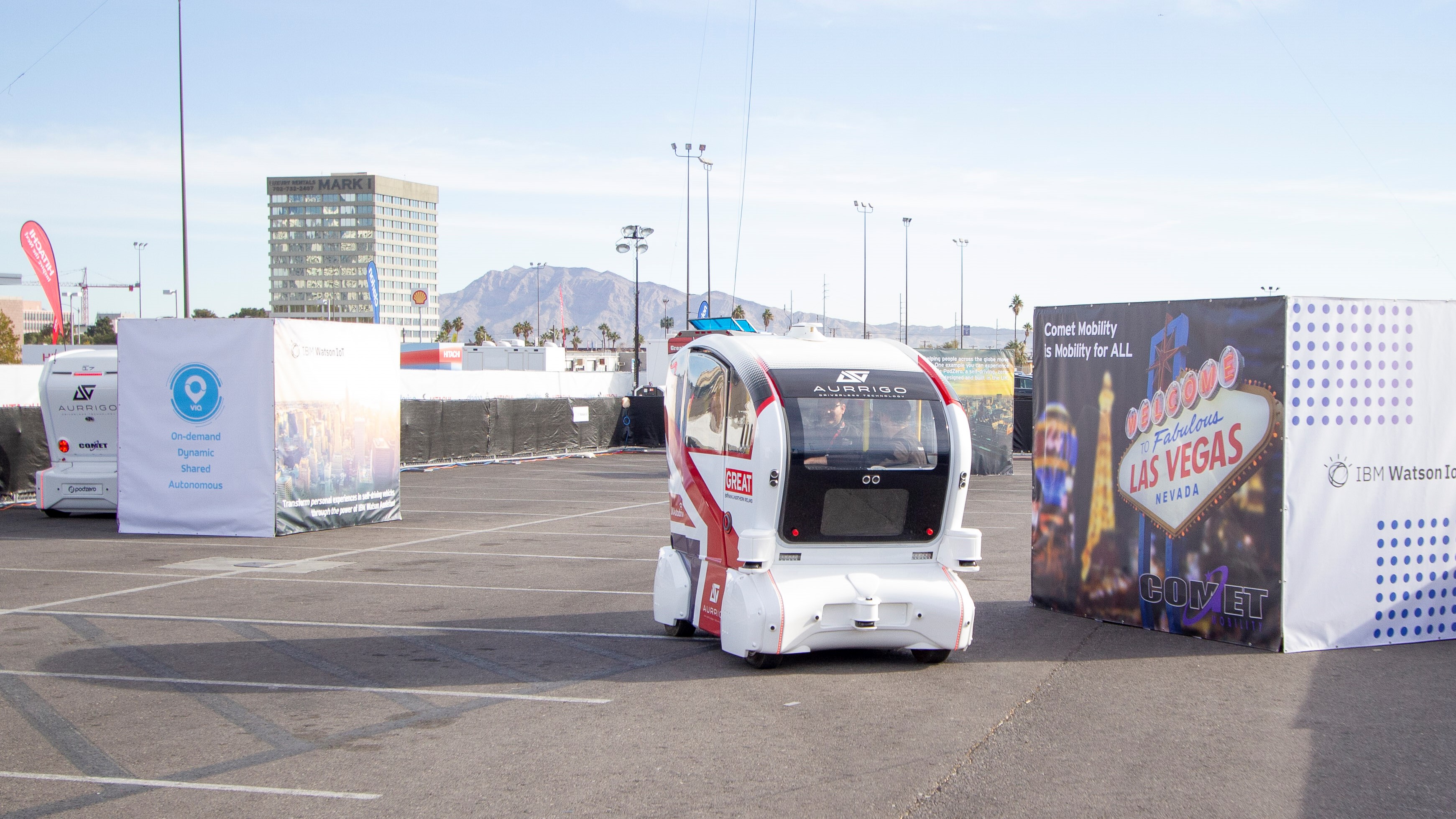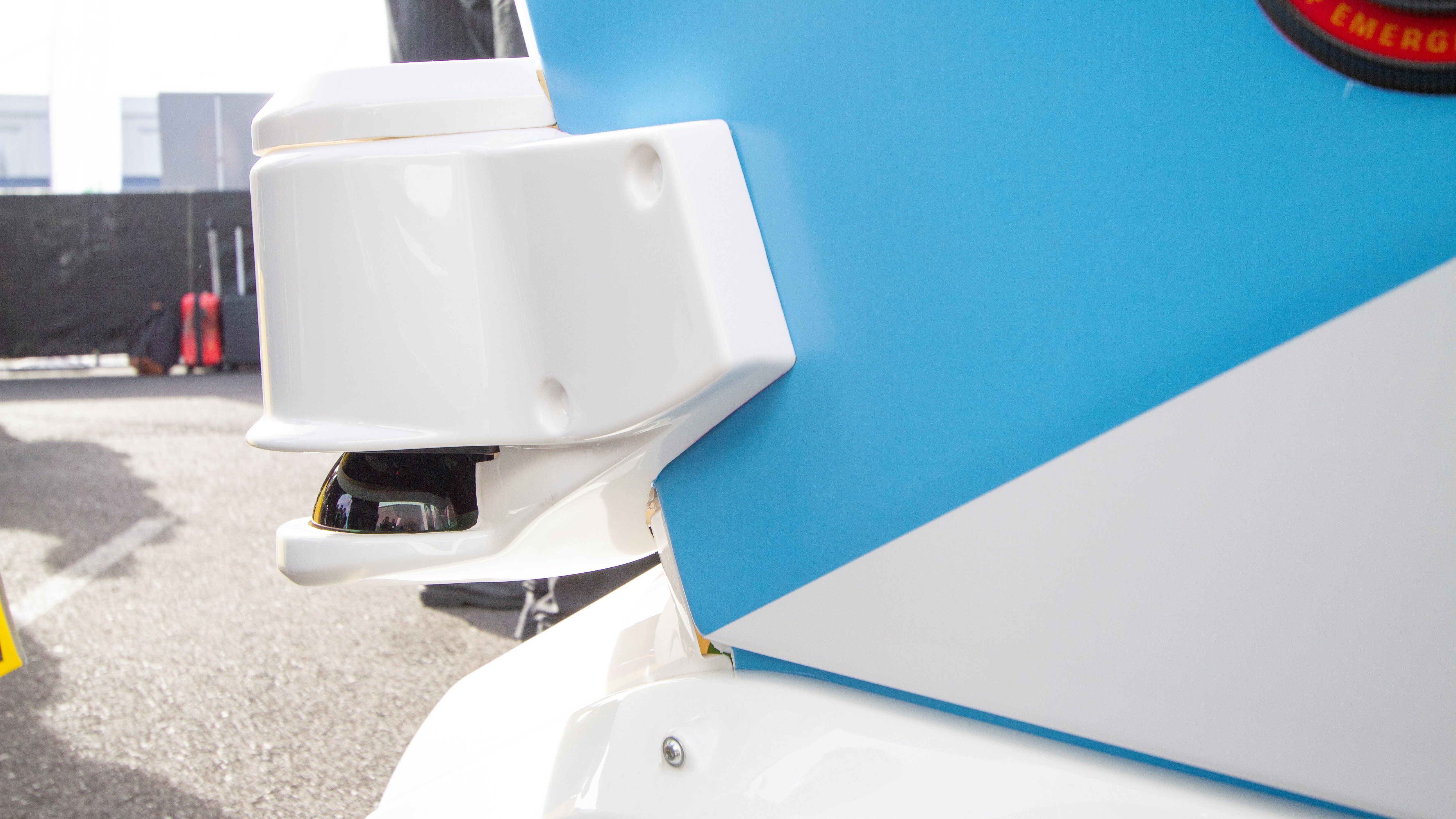How IBM Watson will improve your morning commute
Where to?

Photo credit: Joe Miller
IBM Watson isn't known as a consumer-grade bot that works like Amazon Alexa or Google Assistant. It’s really meant to showcase the massive supercomputing prowess of the famous tech icon (and play Jeopardy).
Yet, at a recent demo at the CES 2019 convention in Las Vegas, the powerful 'super assistant' proved helpful in an autonomous shuttle that did not have a steering wheel, brakes, or a gas pedal. It’s proof that self-driving transportation will be powered, at least in part, by your voice.
No manual needed
The demo took place in a parking lot and involved a company called Via, together with Comet and Aurrigo – showing not just how a shuttle might work but how you could request one as well. (Aurrigo operates autonomous shuttles in highly controlled settings like a college campus, but IBM Watson is not currently available in the shuttles.)
The idea is that, when someone jumps into one of these pods, they probably won’t know anything about how to run a touchscreen or even start the vehicle. They might be unfamiliar with how any of it works.



Photo credit: Joe Miller
In my test, the small enclosed space (about 100 feet in a parking lot) was meant to show how a shuttle might respond to voice commands about a destination, like New York or London. An operator on board activated the shuttle and used a safety switch to provide the power, but I spoke to Watson myself by saying “Hello Watson” and stating my destination.
Sign up for breaking news, reviews, opinion, top tech deals, and more.
I instructed the bot where to go, then asked about the weather. (I noticed the bot does not respond to any variations like Hey Watson or just Watson.) Almost immediately, the bot released the brakes and silently powered up the electric motor. Away we went, driving about 5mph. The pods can speed along at up to 25mph but of course this was a highly contained demo.
Reaching the destination about 75 feet away, the pod slowed down and came to stop right on cue. I asked Watson to take us to London next. It was all fairly seamless even though we all know level four self-driving vehicles like this without operator controls won’t become a reality in uncontrolled settings for some time. Most of them drive along concrete barriers today.
Deep conversation
A super powerful bot could be quite useful in the future, when we won’t be preoccupied with driving and paying attention to traffic.
If the bot can engage with us at a much higher level, we will be more productive. I’d like to be able to ask the bot to discuss a complex topic with me, or to let me dictate an entire article (correcting my mistakes and making grammar suggestions), and even help the kids with algebra. Alexa and the Assistant are not quite there, but if Watson actually becomes an automotive assistant, it might help us adjust to the idea that we’re mostly along for the ride.
And, it helps us feel more relaxed. It was a curious feeling in the self-driving shuttle knowing that a much more powerful bot than Alexa was controlling the ride.



Photo credit: Joe Miller
- Check out all of TechRadar's CES 2019 coverage. All the breaking tech news and launches, plus hands-on reviews of everything from 8K TVs and foldable displays to new phones, laptops and smart home gadgets.

John Brandon has covered gadgets and cars for the past 12 years having published over 12,000 articles and tested nearly 8,000 products. He's nothing if not prolific. Before starting his writing career, he led an Information Design practice at a large consumer electronics retailer in the US. His hobbies include deep sea exploration, complaining about the weather, and engineering a vast multiverse conspiracy.